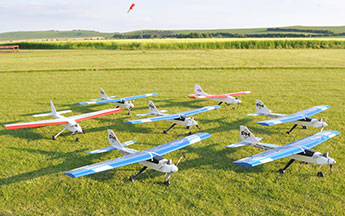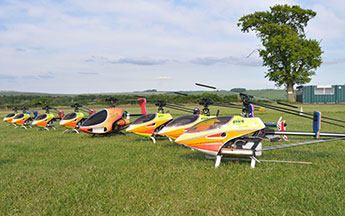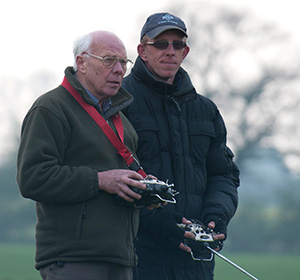Training
Introduction to Training
Using proven technology and exclusively developed training methods we make sure you not only get value for money but also ensure that you take the shortest, safest most enjoyable route to achieve your goals. Take a look at our sections below to help get a better understanding of how Paul Heckles Flight Centre can help you. The Centre has it's own fleet of helicopter and fixed wing training aircraft, plus a carefully chosen selection of more advanced models to cover all the major radio-controlled flying disciplines.

Techniques
Our training techniques closely follow the ones used today in full size aviation, after all, our models have to abide by the same rules of aerodynamics, physics and gravity. The task of the model pilot is made a little more difficult as piloting is remote from the aircraft and relies upon good hand/eye co-ordination. When first starting out the student pilots work load is at 100%, here at the Centre we can help to reduce your work load by introducing the Dual Control System. The Dual Control System is the term used to describe two transmitters connected via a buddy lead, one master and one slave. One feature of this system allows the instructor to assign all or partial controls to the student which permits the student to concentrate on getting comfortable using the basic primary controls first. If for example a student was showing difficulty in operating both rudder and throttle simultaneously (being on the same stick), the rudder control can be removed from the equation thus allowing the student to grasp smooth throttle inputs. The instructor passes control by simply holding in the trainer switch on his master transmitter and at any time can take full control by releasing this switch. This eliminates the need for any panic from the student.
Training
As a beginner, mastering the basics is the first step to becoming a competent solo pilot. After an initial short briefing covering basic aerodynamics, safety and use of the Dual Control System we then concentrate on as much "hands on" training as time allows (its thumbs on sticks, as often as possible, which allows you to progress your training at a comfortable rate). At the Centre we will advance your training as fast as your skills allow and we certainly won't hold you back unnecessarily. You will also learn how to recognise potential problems with your equipment by developing a pre-flight check routine.
Advanced
Recognising and advancing in your current skill level is an important part of flying and sometimes it's difficult to progress without knowing the correct next steps. Here at the Flight Centre we show you those important next steps to be practiced and give you the confidence to take your flying to the next level.
As your piloting skills increase from those early solo days, to aerobatics and beyond, making the correct choice of equipment is important to be able to progress to the next level. Whether you are upgrading to your first aerobatic model or perhaps investing in a more sophisticated transmitter, we are here to guide you, enabling you to make an informed choice.













